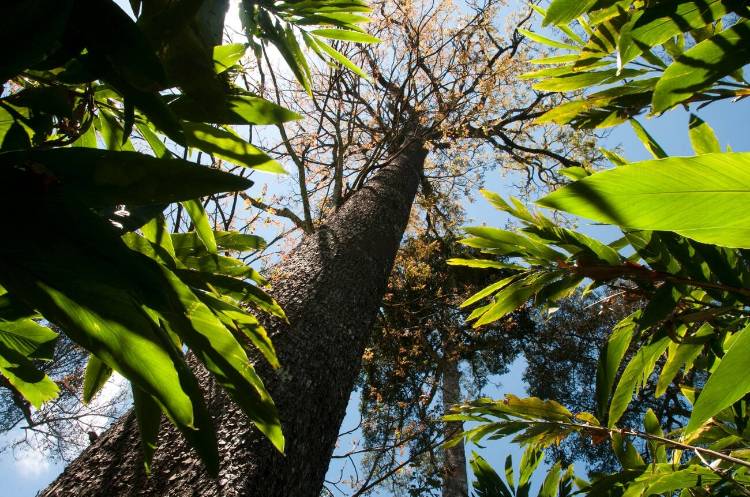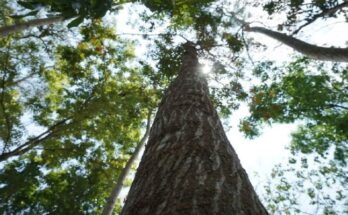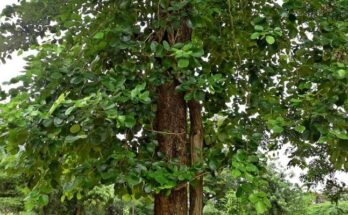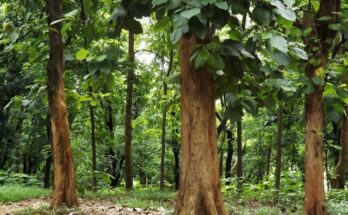|
Getting your Trinity Audio player ready...
|
About Rosewood Tree
Rosewood is one of the most exploited tree species in the world, used to make luxury furniture and musical instruments and rosewood oil, driving its species to the brink of extinction. This scarcity of rosewood resources has pushed prices higher with no sign of slowing down. Rosewood is a deep reddish brown to purple-brown, richly streaked with layers of black resin. It has a fine polish, but its resinous nature makes it difficult to work with. The tree can reach a height of 40 meters, although it can become deciduous in drier subpopulations.
Rosewood can vary from medium to large size, and this tree is found in India. Its scientific name is Dalbergia Sissoo, and it belongs to the Fabaceae family. It has analgesic, amino acid, anti-inflammatory, flavonoid, phenolic, digestive, estrogenic, thermogenic, and anti-diabetic properties.
Rosewood Tree Scientific Name is Dalbergia Sissoo
Rosewood Tree Scientific Classification
| Classification Type | Classification Status |
|---|---|
| Kingdom | Plantae |
| Class | Magnoliopsida |
| Family | Fabaceae |
| Phylum | Magnoliophyta |
| Order | Fabales |
| Genus | Dalbergia |
| Clade | Angiosperms, Eudicots, Rosids |
| Tree Type | Deciduous Tree |
Don’t Miss: Mahua Tree | Uses, Fruit, Ayurvedic Health Benefits, Seeds, & How to Grow?
7 Health Benefits of Rosewood Tree (Shisham, Dalbergia Sissoo)

Rosewood benefits are found to be very beneficial in keeping your body healthy. Rosewood leaves leave behind a sticky substance that is used in the treatment of many more diseases. Tell us about the benefits of rosewood leaves, roots, bark, flowers, and leaves:
1. Stomach Irritation – You must have felt your stomach irritation at some point, but if there is a rosewood tree (shisham) around you, then you won’t have that problem next time. In a scientific study, peepal leaves were found to have anti-inflammatory and analgesic properties that can heal various types of pain and inflammation.
2. Leprosy Treatment – For leprosy, bathing in the sap of rosewood brings sufficient benefit, or the afflicted person should boil fresh wood in water and cool it and bathe in that water. After boiling 500g of fresh wood in water for some time, filter this water and take a bath from it.
3. Treat Menorrhagia – Excessive bleeding in females during menstruation time is called menorrhagia. To prevent this disease, dissolve some rosewood leaves in clean water overnight. Separate the leaves from the water in the morning and drink this water. It is beneficial for menorrhagia.
4. To Purify the Blood – Rosewood benefits can help purify your blood. In Ayurveda, rosewood leaves are used to remove impurities from the blood and to heal skin diseases. Antibacterial and antiviral properties are found in peepal leaves and based on scientific research, it has also been said that drinking rosewood leaf extract can purify the blood.
5. Reduce the Risk of Alzheimer’s – You can also reduce your neurological problem by using rosewood oil. With its use, the neuro problem is gradually reduced. Not only that, massaging with this oil regularly reduces Alzheimer’s disease, memory, and brain problems.
6. Red Eye Treatment – If the eye has turned red from the fall of the moth from the insect, then its treatment with rosewood leaves is possible. Sheesham is also very soothing for sore eyes. Clean the sweet leaves of rosewood and tie the pulp over your eyes at night while you sleep. This relieves both redness and eye pain.
7. Cure diabetes – Drinking a decoction of rosewood bark is beneficial for gonorrhea diseases. To do this, make a decoction by boiling 50g of bark in 2 glasses of water until half.
3 Uses of Rosewood Tree (Dalbergia Sissoo Uses)

- Rosewood is commonly used for furniture, decorative items, musical instruments, and veneers.
- When properly planted, the tree produces strong, strong, heavy wood that resists rot and insects.
In India and Java, it is grown as plantation timber, often on hardy single-variety trees, to make its coveted long, straight barrow. - Timber is used to manufacture high-quality furniture and cabinets, guitar bodies and fretboards, exotic veneers, carvings, boats, skis, and reforestation.
Know About Rosewood Tree Flowers (Dalbergia Sissoo Flower)

Dalbergia sissoo, commonly known as Rosewood or North Indian Shisham, is a hardy, fast-growing, deciduous rosewood native to the Indian subcontinent and a crooked tree with long, leathery leaves and pink or whitish flowers. The flowers are whitish pink. The flowers are produced from October to February.
Know About Rosewood Tree Leaves (Dalbergia Sissoo Leaves)

Rosewood leaves are used as an herb in Ayurveda. The sticky substance that comes from rosewood leaves is used to treat many diseases. Along with these, the oil extracted from this tree and used as an antidepressant, painkiller, aseptic, antibacterial, insecticide, aphrodisiac, energizer, etc.
Conclusion
In Ayurveda, various parts of this tree are used to treat eye pain, breast swelling, painful urination, gynecological disorders, and bleeding disorders. A paste from the leaves mixed with mild oil is suitable for cleansing the skin, e.g., scraping and braiding. Herbs are always safe.
Don’t Miss: Pine Tree | Uses | Benifits | Wood | Leaves & Flower



